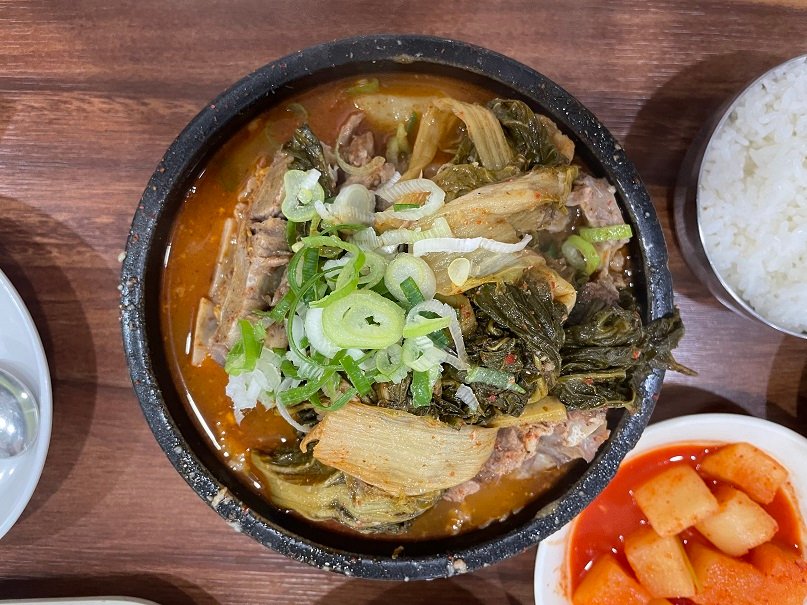A Heartfelt Introduction of Korean Bibimbap Recipe
Bibimbap is one of my all-time favorite Korean dishes. Even when nothing else sounds appetizing, one bowl somehow revives my appetite—and brings joy. Yet eating it too often can raise “am I overeating?” thoughts. So today I’m sharing my lighter, more mindful bibimbap recipe—with reduced seasoning, no sesame oil or seeds, and the natural flavor of ingredients shining brightly. It’s perfect as a satisfying, wholesome one-bowl meal.
What Is “Namul” Anyway?
In Korean cuisine, namul refers to any vegetable-based side dish—whether blanched, stir-fried, seasoned, or tossed. If it’s made from veggies, whether they’re fresh, dried, or even seaweed, it’s generally considered namul—even sautéed carrots or seaweed stems. That means the world of flavors and textures is delightfully vast. For bibimbap, lightly seasoned namul makes all the difference.
*the meaning of bibimbap for korean : everybody wants!!!!

My 7 Homemade Namul (Makes 2–3 Servings for 4 People)
- Soybean Sprouts
- 500g soybean sprouts, rinsed
- 1 tbsp soy sauce + 1 tbsp minced garlic
- How to make: Steam until tender (~8 minutes), drain, toss with sauce.
- Radish Salad (Musaengchae)
- ⅓ daikon radish, julienned
- 1 tsp salt + 1 tsp sugar—let sit 1 hour, squeeze out liquid
- Toss with 1 tbsp gochugaru (Korean chili powder), 1 tsp shrimp paste, 1 tbsp minced garlic, 2 tsp honey or jocheong
- Braised Daikon (Munarul)
- ⅓ daikon, sliced
- 150ml dried pollock broth (or veggie broth), 1 tbsp soy sauce, 1 tbsp garlic
- Sauté briefly, add broth, simmer until tender
- Seaweed Stem Stir-Fry
- 300g salted seaweed stems, trimmed
- ½ tbsp minced garlic, 1 tbsp fish sauce or aqueous shrimp paste, pinch sugar/pepper, drizzle olive oil
- Stir-fry quickly; add water if needed
- Carrot Sauté
- 1–2 carrots, julienned
- Lightly sauté with olive oil and a pinch of salt
- Zucchini Sauté
- 1 zucchini, sliced
- Drizzle olive oil, 1 tbsp garlic, dash shrimp paste; salt to taste
- Shiitake Mushroom Stir-Fry
- Cooked shiitake mushrooms, thinly sliced
- Sauté with olive oil, garlic, and salt or soy sauce
(You can swap or add seasonal veggie namul like spinach, bean sprouts, bellflower root, fernbrake, seaweed, or bamboo shoots.)

Easy Assembly (for 4 servings * 2–3 meals)
- Divide rice into bowls.
- Arrange your homemade namul toppings around the rice.
- Add a small spoonful of red chili paste (gochujang) or savory soybean paste sauce.
- Optional: Drizzle minimal sesame oil or sprinkle sesame seeds right before eating, for aroma—not heavy flavor.
This makes a generous amount, perfect for prepping ahead and enjoying a nutritious, quick meal the next day. You can also substitute toppings with quick grilled beef, meat sauce, or even yukhoe or yukjeon for rich variations.
*Gochujang is a traditional Korean chili paste made from red pepper powder, fermented soybeans, glutinous rice, and salt. It’s thick, spicy, slightly sweet, and full of umami flavor. Gochujang is often used in bibimbap and many Korean stews and sauces.
Traditionally, it’s fermented for weeks or months, which gives it a deep, rich taste. While store-bought versions are convenient, homemade gochujang can be healthier with less sugar and no additives.
Why This Bibimbap Rocks
- Flavorful without heaviness: Namul provides diverse textures and nutrients, minus excessive oil.
- Mindful seasoning: Minimal salt allows ingredients to shine, while sesame oil adds aroma at the table.
- Meal prep heaven: Makes enough for 2–3 meals for a family of four—perfect for busy days.
- Wholesome and balanced: Combines fiber-rich veggies, healthy carbs, and plant-based proteins.
Joyful Eating & Health Benefits
What makes this bowl truly special? The happiness it brings when nothing else sounds good. As I stir everything together—mild spiced red paste, crisp namul textures, chewy mushrooms, and fresh aroma—it feels like home in a bowl. And doing it light yet delicious? That’s the miracle. This is comfort without heaviness, health without blandness.
Key Takeaways – Your Mindful Bibimbap Guide
- Simple seasoning, big taste: Let veggies do the speaking.
- Sesame oil optional: Add only at the end to keep preparation light.
- Prep more, stress less: Make these namul ahead for easy meals.
- Mindful joy, happy bowl: Eat with gratitude and awareness—not just routine.






